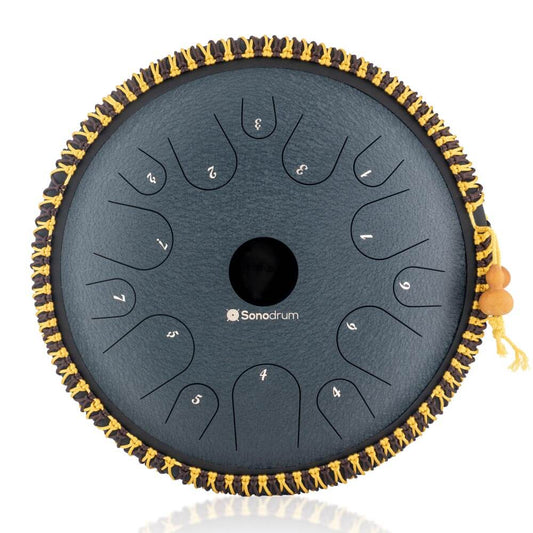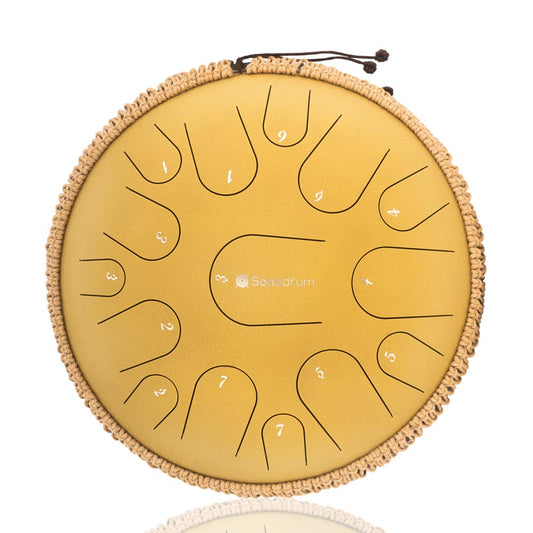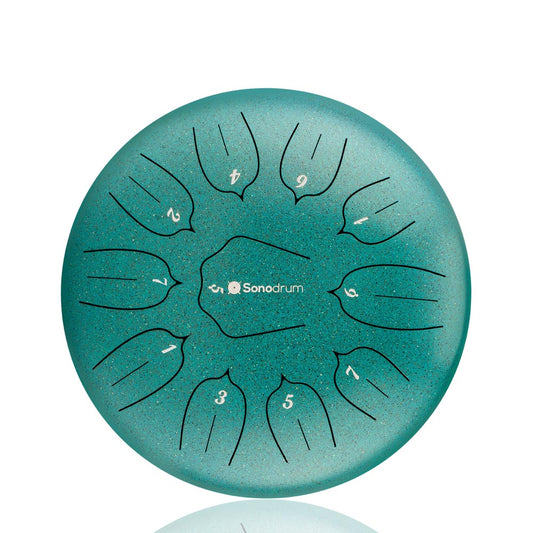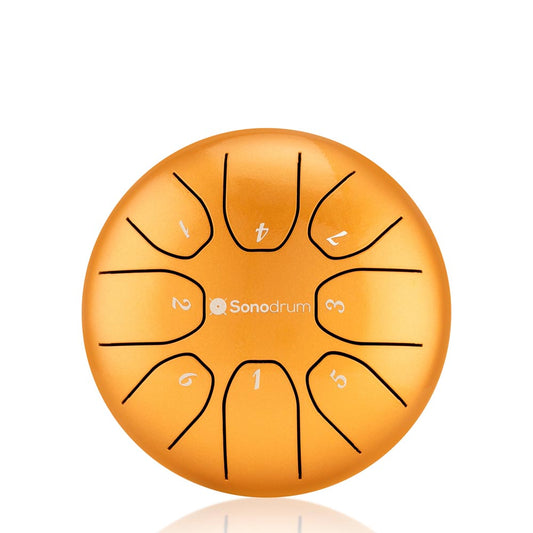Meditation music plays a vital role in enhancing relaxation techniques and creating a calming atmosphere for deep introspection. One particularly effective instrument in this realm is the tongue drum, known for its soothing tones that resonate beautifully with various musical styles. By incorporating different meditation music styles, enthusiasts of sound healing can craft unique experiences that profoundly enrich their practice. Join us as we explore how the harmonious sounds of tongue drums can elevate your meditation journey.
Key Takeaways
- Meditation music enhances relaxation techniques.
- Tongue drums produce soothing and calming sounds.
- Different musical styles can elevate meditation experiences.
- Combining music with sound healing supports overall well-being.
- Creating a personalized meditation playlist can enhance focus.
The Essence of Tongue Drums in Meditation Music
The tongue drum has emerged as a significant instrument in meditation practices, offering unique benefits rooted in its sound qualities. Understanding the tongue drum definition allows practitioners to appreciate its role more fully. Originating from diverse cultures, this percussive instrument captivates many with its mellow tones and soothing effects.
What is a Tongue Drum?
A tongue drum is a melodic percussive instrument usually crafted from metal or wood. The instrument produces sound by striking its tongues, which are cut from a hollow resonant body. The firm yet gentle strikes create a collection of rich tones, making it a beloved choice for meditation enthusiasts. The tongue drum definition encapsulates its essence as a tool for relaxation and self-discovery.
Benefits of Using Tongue Drums in Meditation
Utilizing tongue drums in meditation practices offers various advantages. The instrument’s origin is rooted in authenticity, and its use has evolved, making it accessible worldwide. The sound qualities of a tongue drum facilitate deep meditation sessions, enhancing focus and tranquility. Here are some of the key benefits:
- Promotes relaxation through soothing melodies
- Improves mental clarity during meditation
- Encourages emotional release and healing
Incorporating a tongue drum into meditation practices can elevate the overall experience and foster a deeper connection with oneself.
Exploring Calming Ambient Soundscapes
Understanding ambient music involves exploring its defining features and how these qualities contribute to a serene atmosphere. Ambient music characteristics include minimal structure and a focus on long, sustained sounds. These elements create tranquil soundscapes that are perfect for enhancing meditation practices.
Characteristics of Ambient Music
Ambient music is distinguished by its atmospheric nature. It embraces gentle melodies and subtle textures, drawing listeners into a peaceful environment. This genre often includes soft harmonies and layered sounds that merge seamlessly. The absence of strong rhythms allows for a smooth auditory experience, promoting relaxation and mindfulness. These qualities make ambient music a popular choice among those seeking a calming backdrop for meditation.
How Ambient Sounds Enhance Meditation with Tongue Drums
Integrating ambient sounds with tongue drums can significantly enhance meditation. The soothing tones of a tongue drum complement the ethereal quality of ambient music, fostering an immersive experience. The soundscapes created by these elements encourage deep focus and provide a foundation for mindfulness practice. Listeners often find that such combinations lead to greater emotional balance and tranquility, ideal for a meditative state.
5 Meditation Music Styles That Pair Perfectly with the Tongue Drum
Integrating the sounds of tongue drums with various meditation music styles enhances the overall experience. Here are five styles that harmonize beautifully, creating a serene atmosphere for meditation practices.
1. Tibetan Singing Bowls
Tibetan singing bowls produce a unique blend of harmonic overtones that complement the tones of tongue drums. The rich vibrations from these bowls encourage deeper states of relaxation, promoting a more profound meditative experience.
2. Native American Flute Music
The gentle melodies of Native American flute music create a calming backdrop for tongue drum sounds. This pairing invites a spiritual connection, enhancing the flow of energy during meditation practices.
3. Binaural Beats
Binaural beats utilize specific frequencies that align well with the soothing tones of tongue drums. This style supports brainwave entrainment, fostering deep relaxation and introspection during meditation.
4. Nature Sounds
Incorporating nature sounds with tongue drums immerses you in the tranquility of the outdoors. The sound of flowing water or rustling leaves combines with the drum's rhythmic patterns, creating a peaceful environment ideal for reflection.
5. Drone Music
Drone music, characterized by sustained sounds, meshes well with tongue drums, emphasizing their harmonic overtones. This style encourages a continuous meditative state, allowing thoughts to flow freely.
How to Create Your Own Meditation Playlist
Creating a personalized meditation playlist can significantly enhance your practice. By carefully considering track selection, you can curate music that aligns with your individual style and mood. This approach allows for a deeper and more meaningful meditation experience.
Selecting Tracks that Complement Your Style
When choosing tracks for your meditation playlist, think about the atmosphere you want to achieve. Consider the pacing and tonal quality of each track. Here are some tips for selecting the right pieces:
- Identify your mood: Determine whether you want calming sounds or more invigorating tracks.
- Experiment with genres: Explore various styles, such as ambient, drone, or world music, that resonate with you.
- Balance the tempo: Include a mix of slower and moderately paced tracks to maintain flow during your meditation.
- Focus on instruments: Prioritize music that features the tongue drum or other complementary instruments for a cohesive sound.
Incorporating Live Tongue Drum Performance
Integrating live tongue drum performances into your meditation playlist can elevate the experience even further. Live music introduces a dynamic element that often feels more intimate and authentic. Here’s how to incorporate it:
- Find local performers: Look for local musicians or workshops that offer live performances featuring tongue drums.
- Record your sessions: If you play the tongue drum, record your sessions to add a personal touch to your playlist.
- Collaborate with others: Consider teaming up with a friend who plays another instrument to create a unique sound that enhances your meditation.

Conclusion
As we wrap up this exploration of meditation music, it's clear that the five styles we've discussed offer an enriching experience when paired with the tranquil sounds of tongue drums. From the enchanting melodies of Tibetan singing bowls to the soothing tones of nature sounds, each style serves to deepen your meditation practice. It's essential to summarize benefits that accompany these musical combinations, as they not only provide relaxation but also facilitate a deeper connection to oneself.
By embracing the unique qualities of each genre, individuals can discover what resonates most with their meditation journey. This personalized approach not only enhances the auditory experience but also fosters a peaceful mindset conducive to mindfulness. Therefore, it’s a wonderful opportunity to encourage practice in incorporating these sounds into your routine.
Ultimately, enriching your meditation practice is a path of exploration. Listening to these pairings, you'll find the harmonious balance between the tongue drum and meditation music, allowing yourself to delve into a serene state of being. Embrace the journey and let the melodies guide you toward a more profound inner peace.
FAQ
What is a tongue drum, and how is it used in meditation?
A tongue drum is a melodic percussion instrument made from metal or wood, shaped to produce soothing sounds. It's commonly used in meditation as its resonant tones create a peaceful ambiance, enhancing relaxation and mindfulness during sessions.
How can I incorporate tongue drums into my meditation routines?
You can integrate tongue drums into your meditation by either playing it during your practice or listening to recordings. The calming sounds can help center your thoughts and deepen your meditative experience.
What are the benefits of meditating with music?
Meditating with music, especially styles like ambient or nature sounds, can provide a serene environment, reduce distractions, and enhance your ability to relax. This combination can facilitate a deeper connection to your meditation practice.
What music styles work well with tongue drums?
Some of the best music styles that complement tongue drums include Tibetan singing bowls, Native American flute music, binaural beats, nature sounds, and drone music. These styles enhance the meditative effects of the tongue drum's tones.
How can I create a meditation playlist that includes tongue drum music?
When creating a playlist, select tracks that align with the mood and pacing of your meditation. Incorporate a variety of music styles mentioned earlier, ensuring they harmonize well with the soothing sounds of the tongue drums.
Can I play tongue drums live during group meditation sessions?
Absolutely! Live tongue drum performances can greatly enhance group meditation experiences, providing a shared rhythmic and melodic foundation that encourages collective relaxation and focus.




